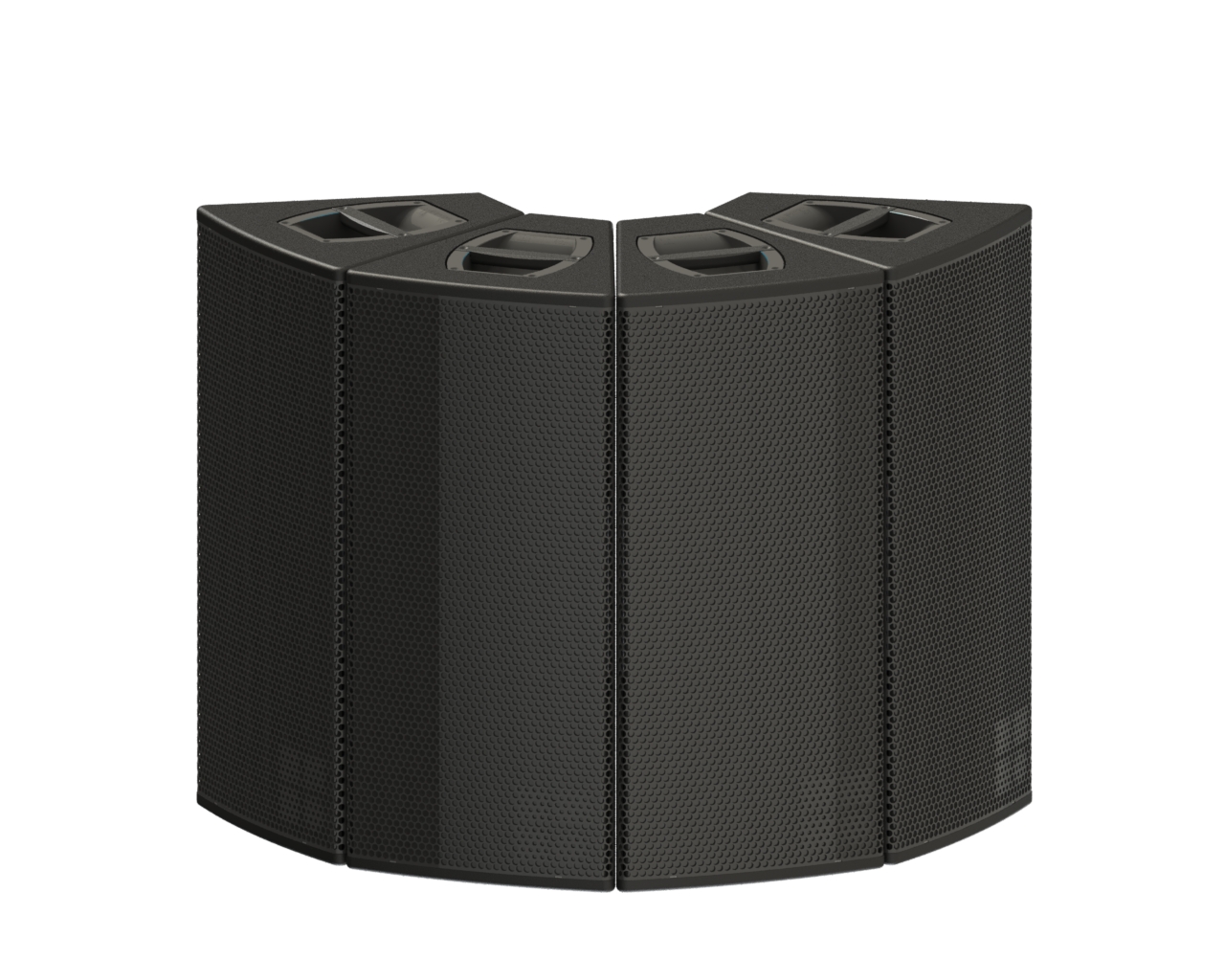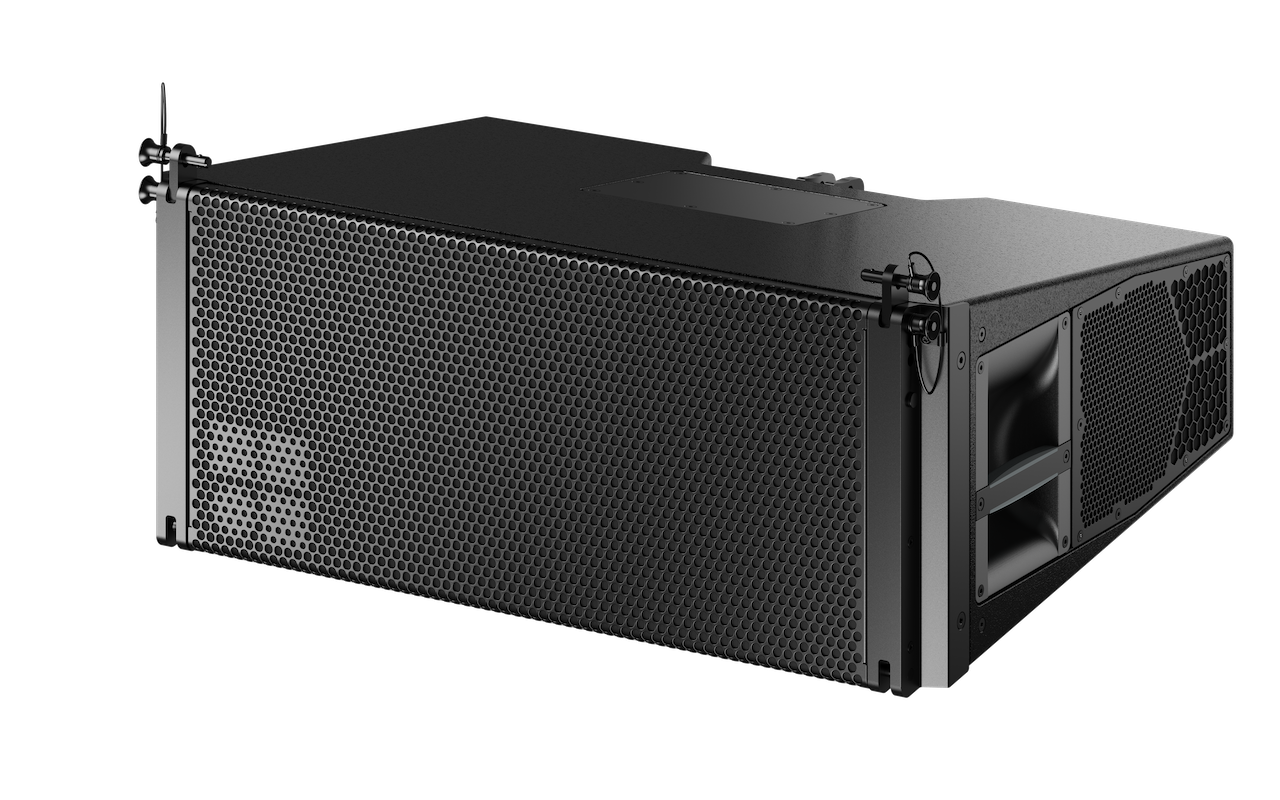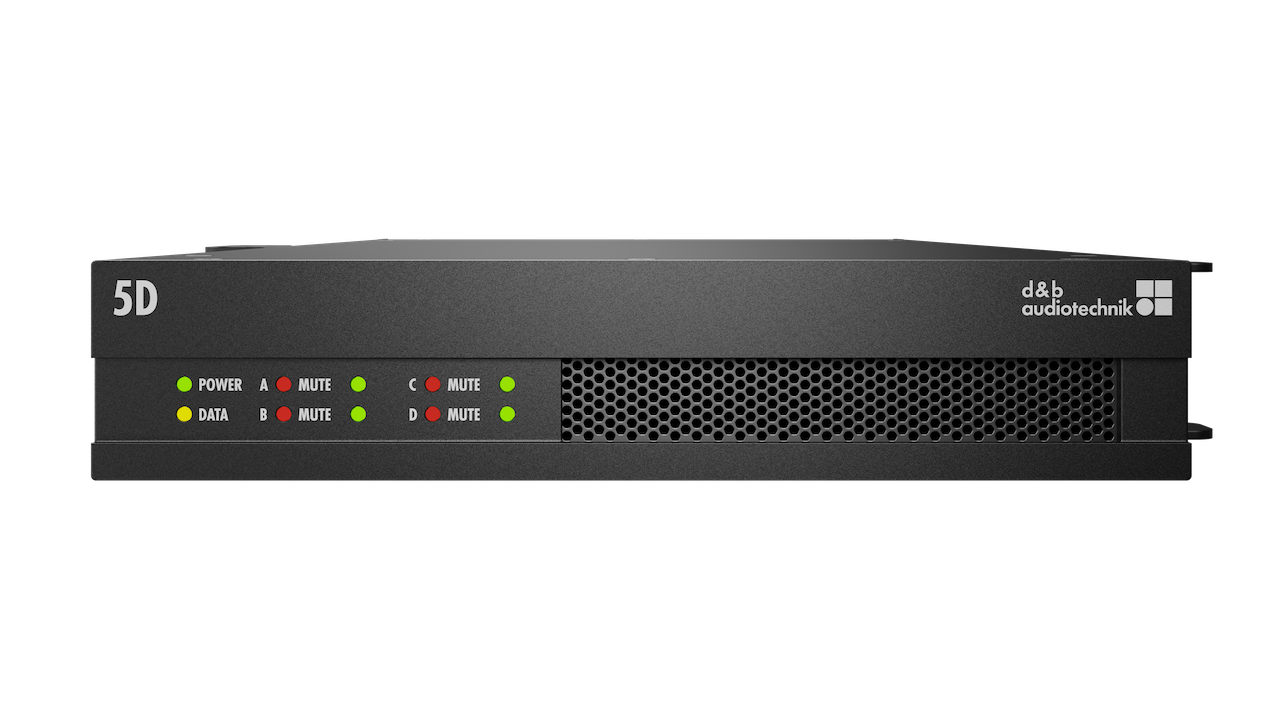The new 5D d&b audiotechnik amplifier will make its InfoComm debut in Las Vegas, booth #W2822, after its initial launch at ISE 2022. The professional audio company will also be showcasing its A-Series loudspeakers and XSL system.
The all-new 5D installation amplifier
InfoComm attendees will be able to see first-hand the all-new 5D installation amplifier, a four-channel DSP amplifier featuring integrated Dante networking, flexible power sharing and low cost per channel, all within an ultra-compact design. The 5D addresses a broad range of installation projects, ensuring that more people around the world can experience the dynamic performance and unrivaled power of d&b technology solutions.
“The ultra-compact, Dante enabled, cost-saving 5D amplifier will open up more flexibility and options to d&b’s world of creativity,” stated Marc Lopez, vice president marketing, d&b audiotechnik Americas. “It will also enable the unparalleled immersive environment of Soundscape to smaller applications.”
[d&b audiotechnik Brings the Immerse World of Leonardo Da Vinci to Life]
d&b audiotechnik will also show the A-Series unique loudspeaker concept

Realizing all the adaptability of a point source cluster with the extensive control options of a d&b line array, the system comprises the AL60 and AL90 loudspeakers, with ALi60 and ALi90 offering cabinets designed specifically for permanent installation.
Both loudspeakers share a passive 2-way design featuring one 1.4-inch exit HF compression driver with a 3-inch diaphragm mounted to a wave shaping device, and two 10-inch neodymium LF drivers. The combination of sophisticated waveguide design and the symmetrical dipolar arrangement of the LF drivers allows a smooth overlap of the adjacent frequency bands in the crossover design. The wave segments of each cabinet couple without gaps and sum up coherently.
Using the appropriate frame, up to four AL60/AL90 loudspeakers can be flown either in vertical columns or horizontal clusters. Variable splay angles between adjacent cabinets can be set from 20-40 degrees in 5-degree increments, allowing the finest of adjustments and ensuring sound is directed precisely where it’s wanted and nowhere else.
[The Inside Track—Straight from InfoComm Exhibitors]
Midrange Directivity Control (MDC) ensures frequencies between 200Hz and 2kHz are evenly distributed, regardless of the splay angle. With its 60-degree horizontal directivity pattern the AL60/ALi60 can be maintained down to approximately 550 Hz, while its output capability can cover a distance of up to 100 feet depending on climatic conditions. The AL90/ALi90—with its 90-degree horizontal pattern control down to 370 Hz—is both sonically and mechanically compatible, ensuring the same optimal acoustic result is achieved consistently anywhere, at any angle—whatever the configuration.
Like all d&b systems, A-Series fully integrates with the internationally adopted d&b Workflow, unlocking its full potential through streamlined system design and optimization, control, and monitoring.
d&b to exhibit XSL System compact line array at InfoComm 2022

XSL encompasses all the comprehensive features of its SL bloodline, from outstanding broadband directivity control and extended low frequency performance, to comprehensive rigging, cabling, and transportation. The XSL can be deployed as a stand-alone, self-contained package, or as a delay, or fill system to accompany its GSL and KSL siblings.
XSL’s extra small dimensions bring the SL-Series feature set: 2-way active design, high SPL and impressive cardioid low frequency performance—to a huge range of installations and events. The XSL fits seamlessly into the d&b Workflow.
"The performance-to-size ratio of the XSL System is unlike anything available in the current sound reinforcement market," stated Lopez. “For installation, the system's broadband directivity control drastically improves the ratio of direct to reverberant sound in acoustically critical spaces. For mobile, a small footprint and improved sonic performance are extremely valuable. It’s a major step.”
XSL delivers cardioid performance across the full frequency spectrum, resulting in significantly reduced audio spill onto open mics on stage, improved clarity and impact of individual instruments, and less coloration of mid-range build up in venues and on broadcast and recording feeds. Less spill from the main PA to the stage, and backstage, improves the creative experience for performers, while giving more control to monitor engineers, particularly in the mid to low frequencies.
